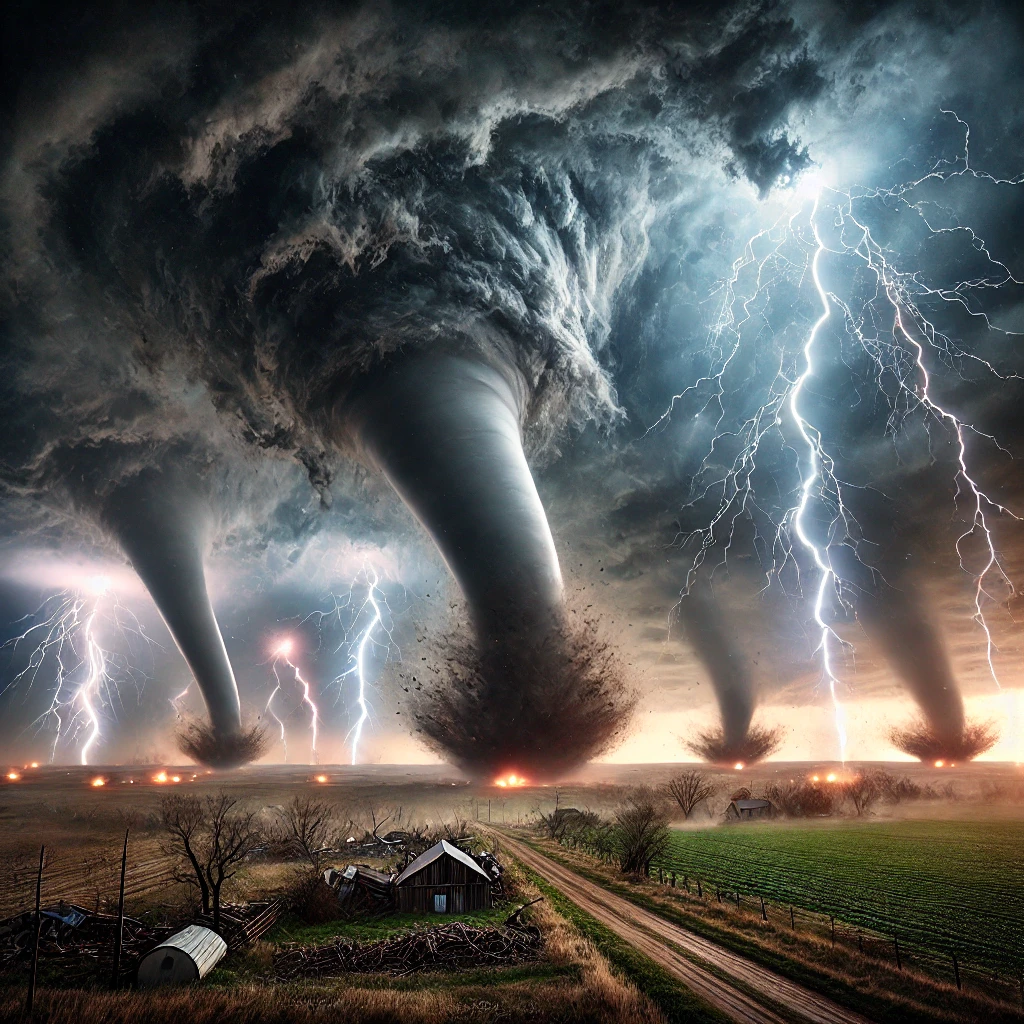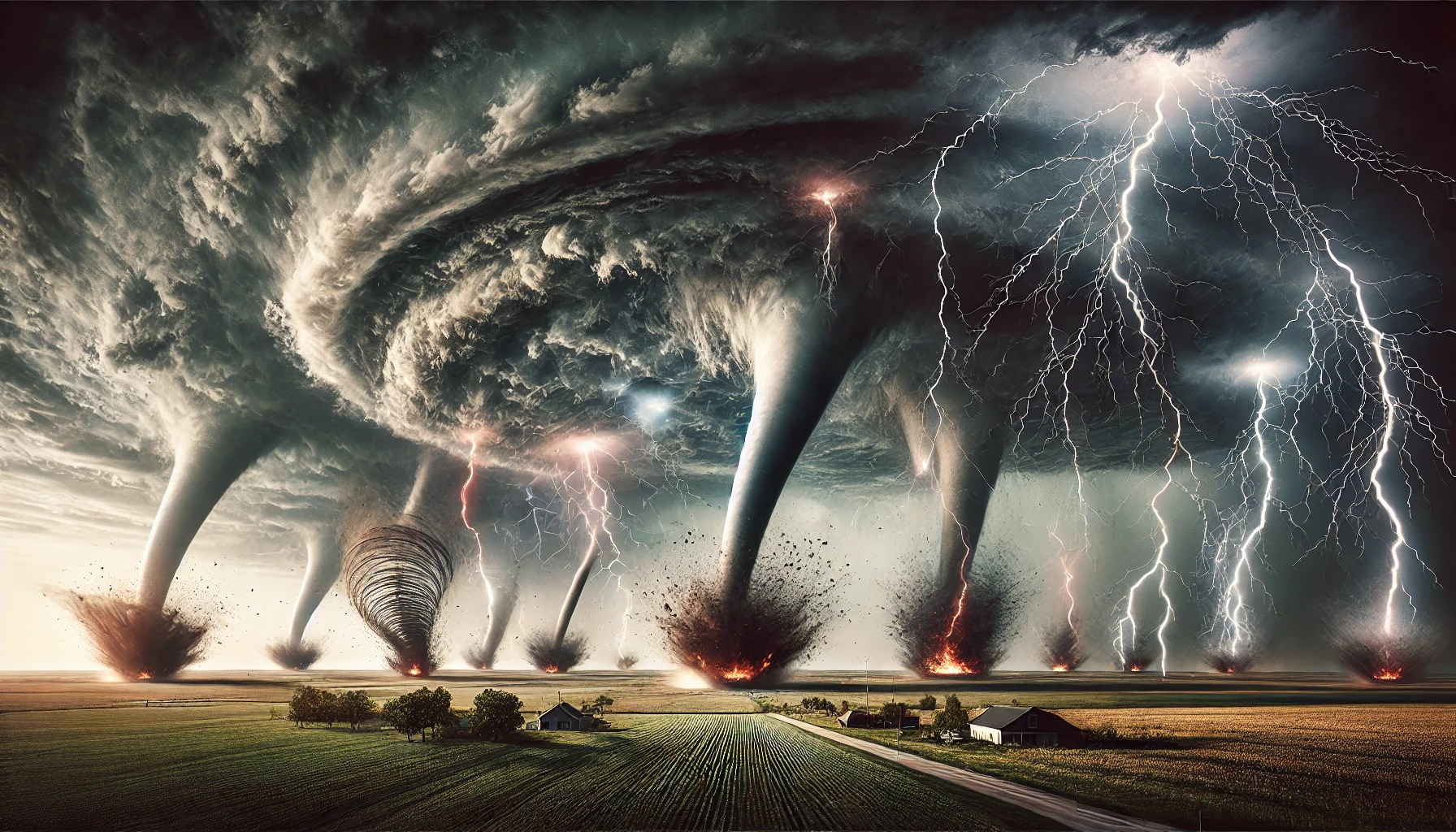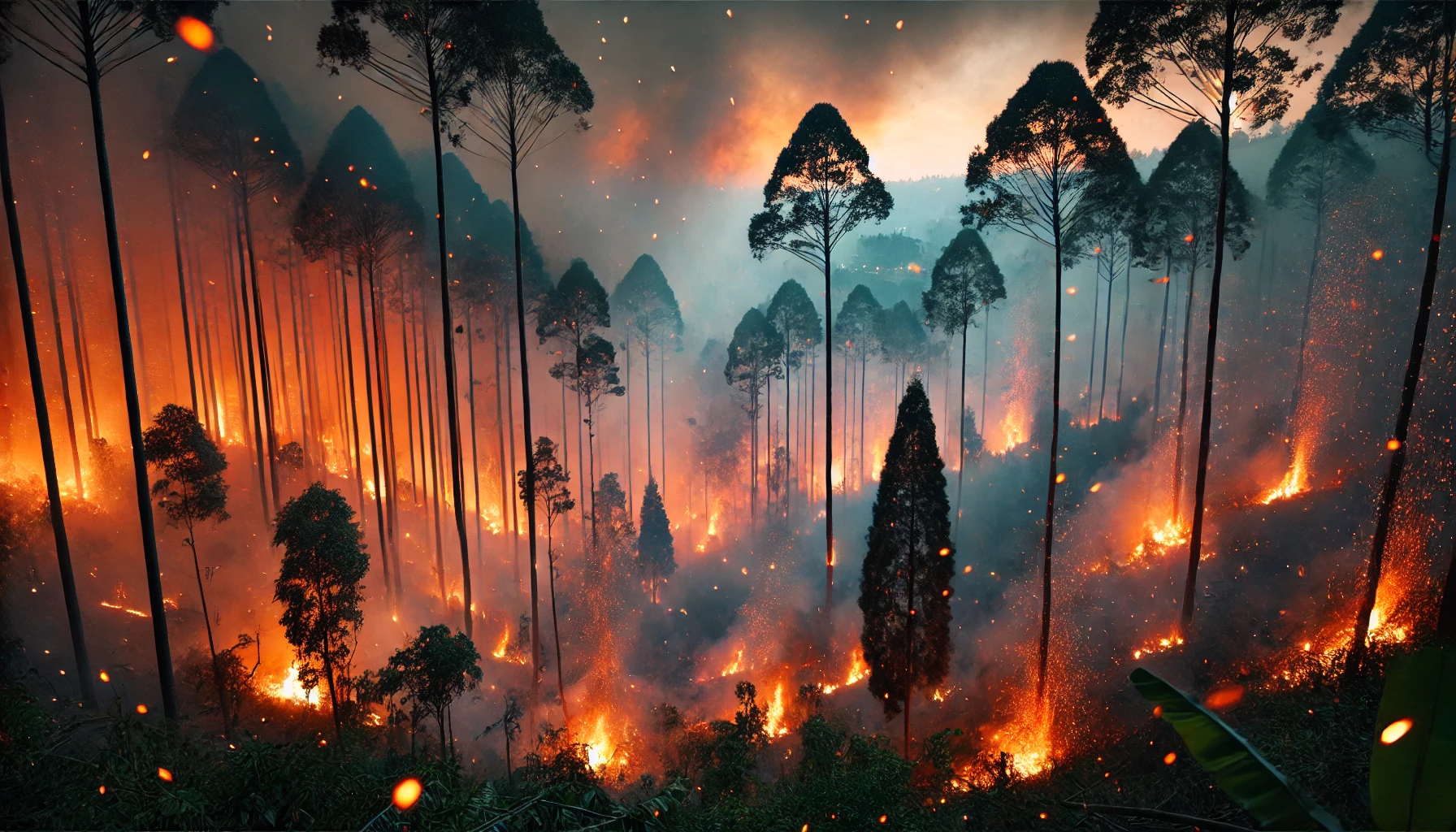Tornado Outbreaks: When Multiple Tornadoes Strike at Once
Introduction:
Tornadoes are one of the most violent and awe-inspiring natural phenomena on Earth, capable of producing catastrophic damage in mere minutes. While a single tornado can cause significant destruction, the phenomenon of multiple tornadoes forming in quick succession—known as a “tornado outbreak”—is particularly dangerous. Tornado outbreaks occur when a series of tornadoes are spawned by the same weather system, often over a large geographical area, within a relatively short period. Understanding these outbreaks is crucial for meteorologists, emergency services, and communities in tornado-prone regions.
What is a Tornado Outbreak?
A tornado outbreak is generally defined as an event in which six or more tornadoes occur within a limited time frame, typically 24 hours, and are associated with the same weather system. These systems usually involve severe thunderstorms and supercells that generate the conditions necessary for tornado formation.
While there are no universally accepted criteria for what constitutes a tornado outbreak, it is often marked by the simultaneous presence of the following:
- Multiple tornadoes, typically more than six.
- Tornadoes occurring within a defined region.
- Tornadoes associated with a larger synoptic system, such as a cold front, warm front, or an upper-level disturbance.
Causes of Tornado Outbreaks
The formation of tornado outbreaks is largely linked to specific weather patterns that create instability in the atmosphere. Tornadoes are spawned by powerful thunderstorms, particularly supercells, which are rotating thunderstorms with a well-defined updraft. Several atmospheric factors must converge to produce the type of large-scale instability required for a tornado outbreak:
- Warm, Moist Air from the Gulf of Mexico: This provides the energy necessary for thunderstorms to form. Tornado outbreaks often occur in spring and early summer when warm, moist air collides with cooler, dry air.
- Strong Wind Shear: Wind shear refers to the change in wind speed and direction with height. Strong wind shear helps thunderstorms rotate, creating the conditions needed for tornado formation.
- Cold Fronts and Upper-Level Disturbances: A strong cold front or an upper-level trough can lift the warm, moist air, forcing it to rise and triggering severe storms. As these storms develop and rotate, they can produce multiple tornadoes in a short period.
- Jet Stream Influence: The presence of a powerful jet stream can enhance storm rotation, increase wind shear, and aid in the formation of supercells, making tornado outbreaks more likely.

You May Also Like: Wildfires: How Natural and Human Factors Fuel Destruction
The Scale and Impact of Tornado Outbreaks
Tornado outbreaks can vary significantly in scale, from localized events to massive outbreaks that affect multiple states or even countries. The most extreme events are referred to as “tornado super outbreaks,” during which dozens or even hundreds of tornadoes occur over the span of a few days.
Super Outbreak of April 2011
One of the most infamous tornado outbreaks in history occurred from April 25 to 28, 2011. This event, known as the 2011 Super Outbreak, saw 360 confirmed tornadoes across 21 U.S. states and parts of Canada, resulting in 348 deaths and thousands of injuries. With wind speeds reaching over 200 mph in some of the tornadoes, entire towns were leveled, and infrastructure was devastated. The outbreak also set a record for the most tornadoes produced in a single event, with 218 occurring on April 27 alone.
Tri-State Tornado Outbreak (1925)
Another historic event, the Tri-State Tornado Outbreak of March 18, 1925, involved at least 12 tornadoes but was remarkable for the Tri-State Tornado itself. This single tornado remains the deadliest in U.S. history, killing 695 people and cutting a path of destruction across Missouri, Illinois, and Indiana. Though records were not as comprehensive back then, the event is remembered for the unprecedented scale of devastation.
The Devastation Caused by Tornado Outbreaks
Tornado outbreaks pose unique challenges compared to isolated tornadoes. The sheer number of tornadoes, often occurring in rapid succession or simultaneously across vast areas, complicates emergency response and evacuation efforts. Widespread damage to homes, infrastructure, and power grids can leave entire regions vulnerable for extended periods. In many cases, communication lines are severed, making it difficult for communities to coordinate recovery efforts.
Some of the main types of damage caused by tornado outbreaks include:
- Destruction of homes and buildings: Tornadoes can level buildings, reduce entire neighborhoods to rubble, and render homes uninhabitable.
- Infrastructure damage: Roads, bridges, power lines, and water systems are frequently damaged, disrupting everyday life.
- Economic losses: The damage from tornado outbreaks often runs into billions of dollars, as businesses are destroyed, crops are ruined, and industries are disrupted.
- Loss of life: While early warning systems have improved significantly, tornado outbreaks still result in fatalities, particularly when tornadoes strike at night or in less-prepared areas.
The Role of Meteorology in Predicting Outbreaks
Meteorologists have made significant strides in forecasting tornado outbreaks, though predicting the exact number, location, and intensity of tornadoes remains a challenge. Advances in Doppler radar technology, satellite imaging, and computer models have allowed for earlier detection of the atmospheric conditions that can lead to tornado outbreaks. Weather models can now predict the likelihood of severe thunderstorms several days in advance, allowing for better preparedness.
However, despite these advances, tornadoes can still form with little warning, and their paths can be unpredictable. The development of Tornado Emergency Plans and early warning systems in tornado-prone areas has become crucial for saving lives.
Preparing for and Responding to Tornado Outbreaks
Because tornado outbreaks often affect wide regions, it is essential for communities and individuals in tornado-prone areas to have a plan in place. Some key preparedness steps include:
- Monitoring Weather Alerts: Stay informed by monitoring weather reports, especially during tornado season. A Tornado Watch means conditions are favorable for tornado formation, while a Tornado Warning means a tornado has been spotted or detected by radar.
- Designating a Safe Room: Homes and buildings in tornado-prone regions should have a designated safe room, such as a basement or an interior room on the lowest floor, with no windows. If a tornado approaches, people should move to these areas immediately.
- Emergency Kit Preparation: Keep an emergency kit with essential items such as water, non-perishable food, a flashlight, batteries, first aid supplies, and important documents in the safe room.
- Building Tornado-Resistant Structures: Newer construction techniques and materials can make homes more resilient to tornado damage. Reinforced shelters, underground safe rooms, and tornado-resistant building designs can significantly reduce casualties and destruction during tornado outbreaks.
Conclusion
Tornado outbreaks are complex, dangerous, and often unpredictable events that can devastate entire regions. While meteorology has advanced to the point where atmospheric conditions leading to outbreaks can be predicted days in advance, the precise details of each event remain difficult to forecast. The only true defense against the power of these storms is preparedness, early warning, and coordinated response efforts. Understanding the causes, impact, and challenges of tornado outbreaks is critical for reducing their toll on human lives and property.
Communities in tornado-prone areas must remain vigilant, ensuring they have up-to-date plans and strategies in place to face these terrifying natural events when multiple tornadoes strike at once.
Also Visit: Retirement Savings vs. Life Insurance: Which is Important?




2 comments